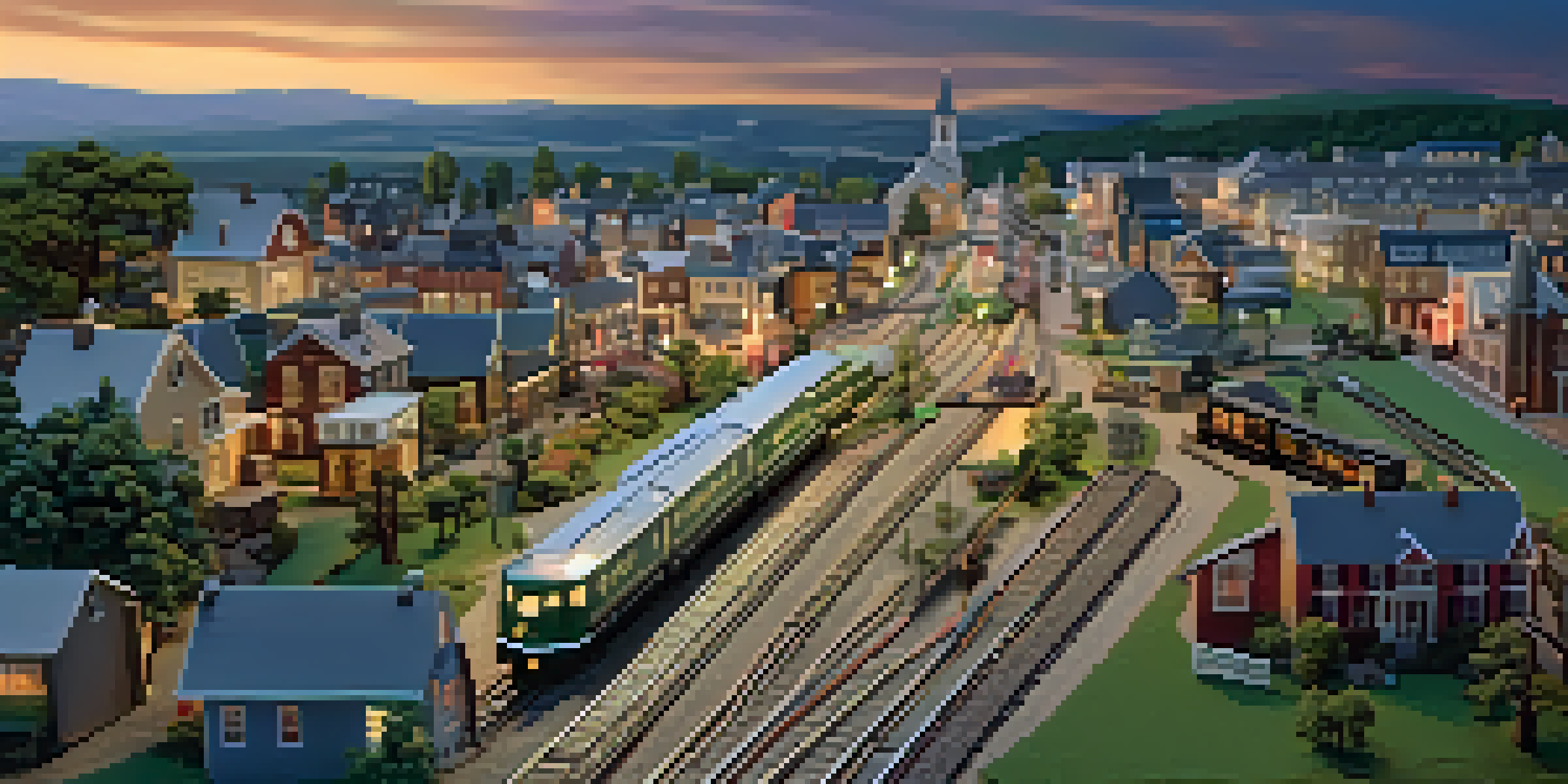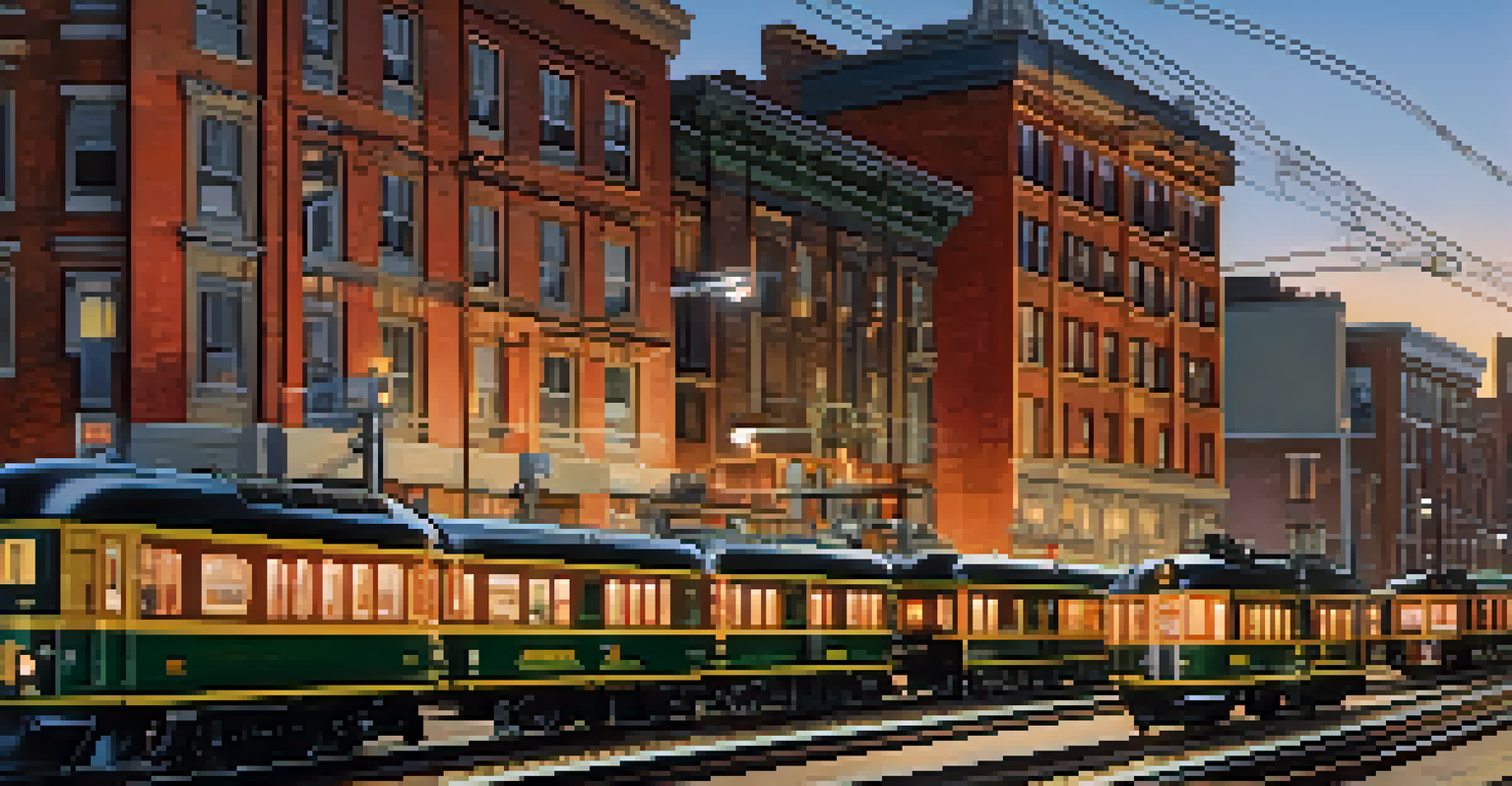Building a Modular Model Railroad: Advantages and Tips

Understanding Modular Model Railroads: A Quick Overview
Modular model railroads are an innovative way to design and build layouts that can be easily assembled and disassembled. Unlike traditional setups, which are often permanent and fixed in one space, modular systems consist of independent sections or modules. Each module can represent a different scene or area, allowing for immense creativity and flexibility in design.
Model railroading is a great hobby that brings people together, allowing them to share their creativity and passion.
One of the key benefits of modular railroads is the ability to transport and share your hobby with others. Enthusiasts can bring their modules to shows or clubs, creating a collaborative environment where different designs come together seamlessly. This social aspect not only enhances the enjoyment of the hobby but also fosters community among model railroaders.
Additionally, modular layouts cater to various skill levels, making them accessible for both beginners and seasoned builders. Newcomers can start with small, manageable modules, while experienced hobbyists can create intricate, detailed sections. This adaptability is a significant advantage for anyone looking to engage with model railroading.
Benefits of Building a Modular Railroad System
One of the standout advantages of modular railroad systems is their versatility. You can expand or modify your layout over time without needing to rebuild everything from scratch. This means you can continuously add new elements and scenes as your skills and interests evolve, keeping the hobby fresh and exciting.

Another benefit is the ease of storage and transport. Since each module is a standalone piece, they can be stored away neatly, taking up less space when not in use. This is especially useful for hobbyists with limited room who still want to engage in model railroading without overwhelming their living space.
Modular Railroads Promote Flexibility
Modular model railroads allow for easy assembly and disassembly, making it simple to customize and expand your layout over time.
Finally, modular railroads encourage collaboration among hobbyists. By working together on shared modules, you can learn from others, share techniques, and even participate in larger exhibitions. This communal aspect enriches the experience and builds lasting friendships within the model railroading community.
Key Components of a Modular Model Railroad
When designing a modular model railroad, it's essential to understand its key components. Typically, you'll need a base frame, which provides the structural integrity for your module. This frame can be constructed from various materials like plywood or foam, depending on your preferences and budget.
The beauty of model railroading is that it can be as simple or as complex as you want it to be, accommodating all skill levels.
Next, consider the track layout and scenery. Each module should have a clear purpose, whether it's a scenic vista, urban area, or a specific theme. Keep in mind that the track must align perfectly with adjacent modules, so precise measurements and planning are crucial to ensure everything fits together harmoniously.
Lastly, don't overlook the electrical components. Ensure that your wiring is organized and easily accessible for maintenance. Properly planning your electrical layout will reduce headaches down the line and ensure that your trains run smoothly along the track.
Planning Your Modular Railroad Layout
Before diving into construction, spend time planning your layout. Sketching your ideas on paper can help visualize how different modules will fit together and the overall flow of the railroad. This step is crucial in determining the types of scenes you want to create and how they will transition into one another.
Consider the dimensions of your modules as well. Modular railroads often follow specific size guidelines, which help ensure compatibility with other modules. A common size is 4x2 feet, but this can vary based on your group or personal preferences. Keeping a consistent size across your modules will make it easier when connecting with fellow enthusiasts.
Community Collaboration Enhances Fun
Sharing modules with others fosters a collaborative environment, enriching the model railroading experience and building friendships.
Lastly, don’t be afraid to iterate on your design. As you plan, you might find that some ideas work better than others. Be flexible and willing to adjust your layouts and themes as you gain more experience and inspiration from others in the hobby.
Building Your First Modular Railroad Module
Starting your first module can be both exciting and daunting. Begin by gathering all necessary materials and tools, such as wood, foam, glue, and paint. Having everything on hand will streamline the building process and help you stay organized.
As you start constructing, focus on creating a sturdy base and ensure that all dimensions are accurate. Take your time with each step, especially when cutting and assembling the frame. A solid foundation is essential for supporting the weight of tracks and scenery, leading to a more successful and long-lasting module.
Finally, once your base is ready, let your creativity shine! Add scenery, buildings, and details that reflect your interests. Whether it’s a bustling cityscape or a tranquil countryside, your first module should be a reflection of your unique vision as a model railroader.
Tips for Enhancing Your Modular Railroad Experience
To make the most of your modular railroad, consider incorporating technology. Digital command control (DCC) systems allow for advanced train operation and can enhance your overall experience. They enable multiple trains to run independently on the same track, adding realism and excitement to your layout.
Another tip is to embrace the social aspect of the hobby. Attend local clubs or online communities where you can share ideas and get feedback on your modules. Engaging with fellow enthusiasts can lead to collaborations, learning new techniques, and discovering fresh inspiration for your projects.
Planning is Key for Success
Careful planning of module dimensions and designs ensures compatibility and smooth transitions between different sections of your railroad.
Finally, keep a journal or portfolio of your progress. Documenting your journey not only provides a sense of achievement but also allows you to look back and reflect on how your skills have grown. This can be incredibly motivating as you continue to explore the world of modular model railroading.
Common Mistakes to Avoid in Modular Railroads
One common mistake beginners make is underestimating the importance of planning. Rushing into building without a clear vision can lead to mismatched modules and frustrating connections. Take the time upfront to create a solid plan to ensure your modules fit together seamlessly and create a cohesive layout.
Another pitfall is neglecting to consider the electrical aspects of your modules. Poor wiring can cause headaches later on, with trains stalling or losing power. Make sure to plan and organize your wiring properly, ensuring it's accessible for any future maintenance or upgrades.

Lastly, don’t overlook the importance of scalability. Many hobbyists start with grand ideas but may not have the space or resources to execute them. Focus on building smaller, manageable modules that can be expanded over time, allowing you to grow your layout without feeling overwhelmed.